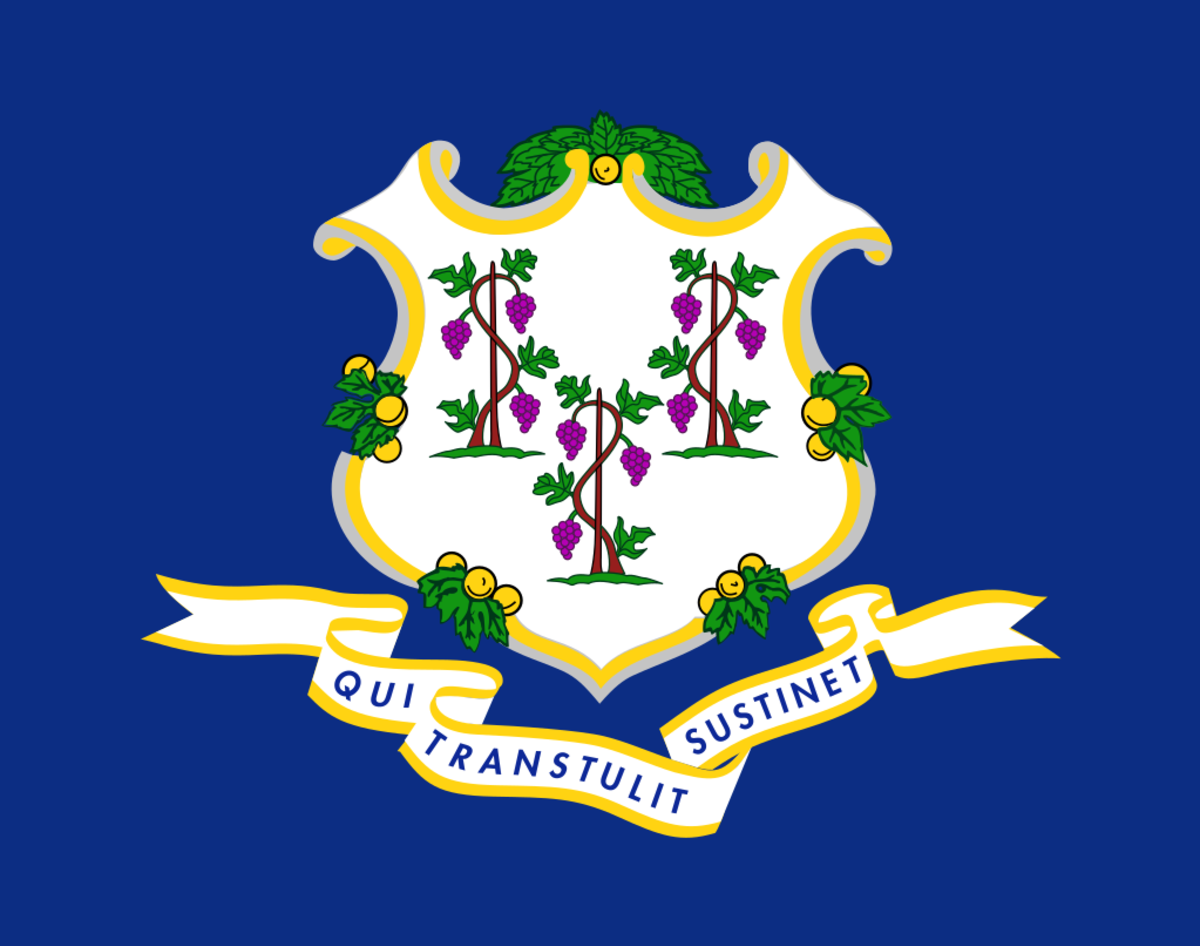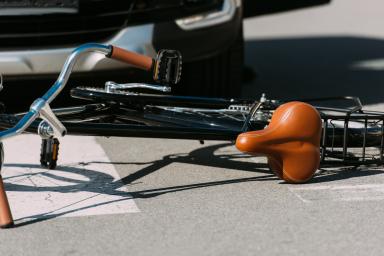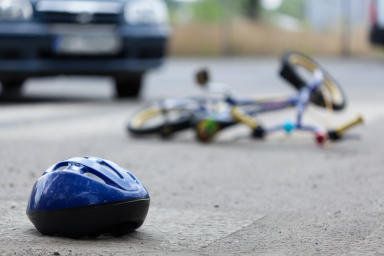Connecticut Bicycle Laws

According to the Connecticut Department of Transportation’s data, which is displayed on the University of Connecticut’s Crash Emphasis Area Dashboard, a total of 4,895 bicycle-related crashes occurred throughout the state from January 3, 2015, to April 27, 2023. Of these accidents, 416 involved serious injuries, while 43 were fatal crashes. More than 2,630 accidents occurred at intersections, while 4,425 happened on dry roads.
To prevent the likelihood of future accidents and ensure the safety of bicyclists in the state, Connecticut has adopted the League of American Bicyclists’ Bicycle Friendly Actions, implemented statewide safety plans, and established relevant policies. These supplement the state’s existing laws and guidelines, which help bicyclists protect themselves against any risks and dangers that may be present on state roads.
To help those who get into accidents while riding a bicycle, Connecticut has a number of legal regulations that guide injured victims in pursuing and recovering their losses in a personal injury claim or lawsuit. These regulations dictate a number of factors that are relevant in such cases, including the time involved in filing a lawsuit and the total amount of damages that a victim can recover.
Connecticut Bicycle Helmet and Equipment Requirements
All bicyclists in Connecticut under the age of 16 are required by law to wear helmets when riding. The helmet must meet the safety standards set by the Snell Memorial Foundation or the American National Standards Institute. Wearing a helmet is optional for adult bicyclists, though they are still encouraged to do so to reduce the risk of injury in case an accident happens.
Parents must ensure that their children are wearing helmets when they are operating a bicycle, though failure to comply will not result in a violation or offense. In case an accident occurs, the failure to wear a helmet will also not be admissible in a civil action or treated as proof of a victim’s contributory negligence.
In terms of equipment, Connecticut requires riders to equip their bicycles with a front lamp that emits a white light up to a minimum distance of 500 feet, along with a rear reflector that emits a red light that is visible from up to 600 feet away. A bicycle must also have reflective materials on both sides that are visible from a minimum distance of 600 feet. Additionally, it must have functioning brakes that allow a rider to stop within 25 feet on dry, level, and unobstructed pavement at a speed of 10 miles per hour.
Connecticut Bicycle Safety Guidelines
To minimize the risk of getting into an accident, bicyclists in Connecticut must follow various safety guidelines when riding a bicycle on roadways and alongside motor vehicles. The state considers bicycles as motor vehicles, and as such, their riders must adhere to traffic ordinances like other motorists:
Bicyclists can ride on all public roadways except for parkways and controlled access highways (unless there are specified bike paths).
A bicyclist must always ride on the right side of the road and along with the flow of traffic; no bicyclist may ride against oncoming traffic.
Multiple bicyclists are encouraged to ride in a single file to allow traffic to pass or overtake them unhindered; only two bicyclists may ride abreast.
All bicyclists must obey stop lights, yield signs, and other traffic signs and signals.
A bicyclist must use proper hand or mechanical signals to notify other riders and motorists when making a turn or coming to a stop.
A bicyclist may ride on a sidewalk or crosswalk, but they must follow the same rules that pedestrians follow when doing so
When passing another rider or emerging from an alleyway/driveway, a bicyclist must allow at least three feet of separation to avoid collisions.
When being overtaken by a vehicle or another rider, a bicyclist must remain far to the right and not increase their speed as the vehicle/rider passes them.
A bicyclist must always have at least one hand on the bicycle’s handlebars.
A bicycle must not carry more people than it was designed for.
A bicyclist must not cling onto a motor vehicle while riding.
A bicyclist must always check for approaching vehicles in all directions before crossing an intersection or entering a street.
A bicyclist must always anticipate potential hazards such as potholes or road cracks, as well as dangers brought by slick or sandy road conditions.
Motorists who are navigating a road alongside bicyclists must also drive properly to prevent any accidents from happening. For example, when overtaking a bicyclist, drivers must stay at least three feet to the left. They also cannot turn right if doing so would negatively impact the safety and travel of a bicyclist.
Is Connecticut a No-Fault State for Bike Accidents?
No, Connecticut follows at-fault rules for insurance claims related to bicycle accidents after the state repealed its no-fault insurance law in 1994. This means that the victims of bicycle accidents can pursue and recover damages from at-fault drivers, who will use their liability coverage to pay for any losses. All motorists in the state are required to have liability coverage, with the minimum amounts being:
$25,000 for bodily injury per person
$50,000 for bodily injury per accident
$25,000 for property damage
Additionally, bicyclists can use uninsured and underinsured motorist coverage to recover losses in case the at-fault driver in an accident lacks a sufficient amount of liability coverage or carries no insurance. Uninsured motorist coverage can also be used to pay for a victim’s damages if the driver who caused the accident flees from the scene since hit-and-run drivers are considered uninsured motorists. Should they wish, bicyclists can obtain uninsured and underinsured motorist coverage worth $25,000 per person and $50,000 per accident, in line with the state’s minimum requirements.
How Much Can Someone Sue for a Bicycle Accident in Connecticut?
Because Connecticut does not limit the amount of compensatory damages plaintiffs can recover in personal injury cases, bicycle accident victims in the state can potentially be reimbursed in full for their losses. Compensatory damages include both economic and non-economic losses in terms of:
Present and future medical treatments
Lost income or loss of earning capacity
Repair costs for property damage
Pain and suffering
Loss of consortium
Emotional distress
Connecticut courts may also allow punitive damage awards in accident cases where the at-fault driver acted with reckless indifference or malicious intent in injuring the victim. However, plaintiffs can only recover punitive damages equal to their attorney’s fees and any other costs related to the litigation of their injury claim or lawsuit.
The state’s modified comparative negligence principle is another factor that can influence the total damages a bicycle accident victim can recover. Under this rule, a victim’s total damage award can be deducted if they were partially at fault for an accident, with the deduction equal to the percentage of their fault. For example, if a victim who receives a damage award worth $100,000 is also 25% at fault, 25% will be deducted from the award, and they will only receive $75,000.
Lastly, Connecticut’s rule on modified comparative negligence adheres to a 51% threshold. This means that if the plaintiff’s fault in an accident case reaches or exceeds 51%, they will no longer be allowed to recover any damages.
What Is Connecticut’s Statute of Limitations for Bicycle Accidents?
According to the General Statutes of Connecticut, bicycle accident victims have up to two years to take legal action against liable parties, starting from the accident that caused their injuries and losses. If a victim dies from their injuries, their dependents may file a wrongful death claim or lawsuit within the same time frame, starting from the victim’s date of death.
Connecticut’s statute of limitations may start at a different date under the mechanics of the discovery rule, where a plaintiff does not discover an injury or complication caused by an accident until later on. In these cases, the statute will begin on the date when the victim discovers the injury or when they should have reasonably discovered it.
Exceptions to the statute of limitations also apply if the defendant in an accident case leaves the state before any legal action can be taken. In these scenarios, the statute will not take the period of the defendant’s absence into account, though plaintiffs will only be given up to seven years as an extension. For cases where the defendant takes steps to fraudulently conceal their liability, the statute will only begin once the plaintiff discovers the defendant’s liability.
Legal Resources for Connecticut Bicycle Accident Victims
Connecticut Bar Association
The Connecticut Bar Association’s website has a public section that allows state residents to access online services for their legal needs. Its Find A Lawyer CT service helps potential plaintiffs search for attorneys based on their location in the state and their area of legal practice. Low-income individuals can also access Connecticut Free Legal Answers, a pro bono virtual legal advice clinic where they can consult with lawyers who can provide basic answers to their legal concerns involving civil law. In addition, people can connect with attorneys for limited-scope representation regarding basic litigation matters.
Connecticut Department of Emergency Services and Public Protection - Crash Reports and Accident Information Summaries
State residents can visit the Connecticut Department of Emergency Services and Public Protection’s website for information concerning specific motor vehicle accidents. Requests for State Police incident reports can be submitted in person at 1111 Country Club Road in Middletown every Tuesday to Thursday from 9:00 a.m. to 2:00 p.m. However, requests are limited to two people per day. Those seeking preliminary accident information can search for Accident Information Summaries, which are available for 30 days from the date of a crash. The DESPP’s website also offers information on how to obtain completed case reports, which can be requested for a fee of $16, either online or via mail.
Connecticut Department of Transportation - Bicycle and Pedestrian Resources
The Connecticut Department of Transportation provides access to different resources for bicyclists and pedestrians alike. Its directory comprises links redirecting to the Connecticut Bicycle & Pedestrian Advisory Board and The National Center for Bicycling & Walking. It also has PDF copies of bicycle and pedestrian safety guidelines made by state programs and the National Highway Traffic Safety Administration. Website visitors can make additional inquiries concerning pedestrian- and bicycle-related topics by sending an e-mail to Anna.Bergeron@ct.gov or by mailing the Bicycle and Pedestrian Coordinator through P.O. Box 317546 in Newington.
Connecticut Insurance Department - Inquiries and Complaints
People can visit the Connecticut Insurance Department’s website to make insurance-related complaints by either completing the Consumer Complaint Form or by sending an email to insurance@ct.gov. They may also send their complaint, along with relevant information concerning their policy and the insurance company involved, to the department at P.O. Box 816 in Hartford. For insurance-related inquiries, they can submit a question online or by contacting the department’s consumer helpline at either 800-203-3447 or 860-297-3900.
Expertise.com StaffAuthor
Step into the world of Expertise.com, your go-to hub for credible insights. We don't take accuracy lightly around here. Our squad of expert reviewers, each a maestro in their field, has given the green light to every single article you'll find. From rigorous fact-checking to meticulous evaluations of service providers, we've got it all covered. So feel free to dive in and explore. The information you'll uncover has been stamped with the seal of approval by our top-notch experts.




